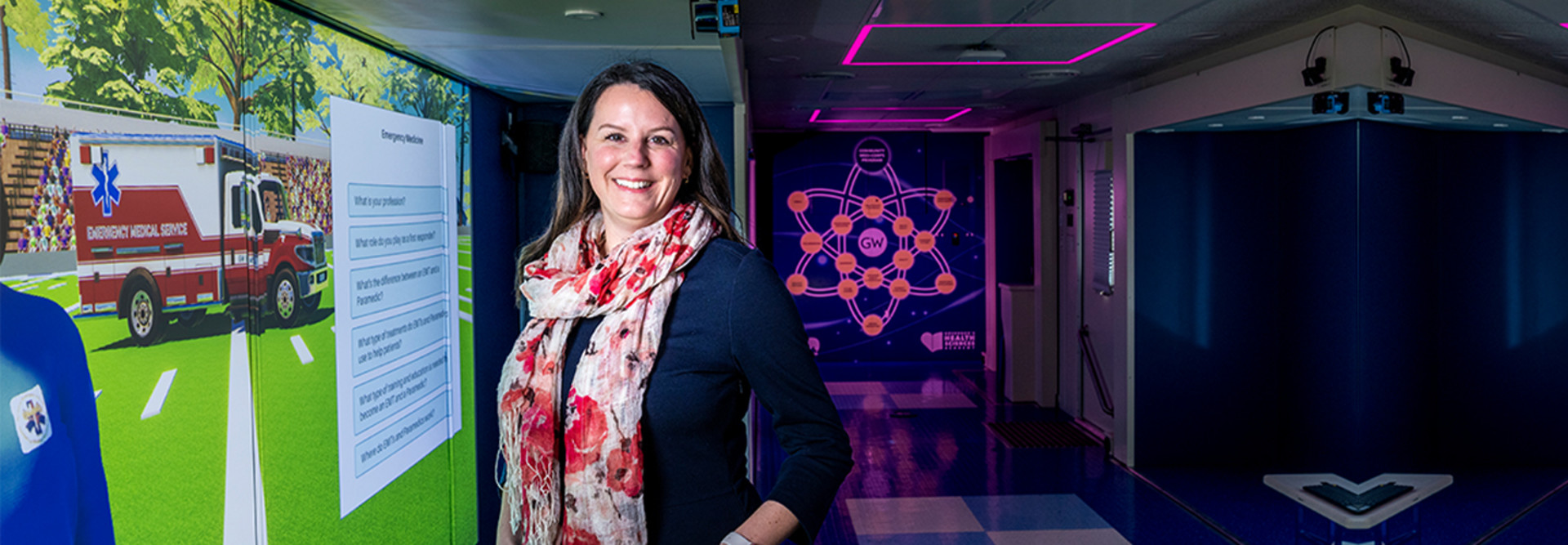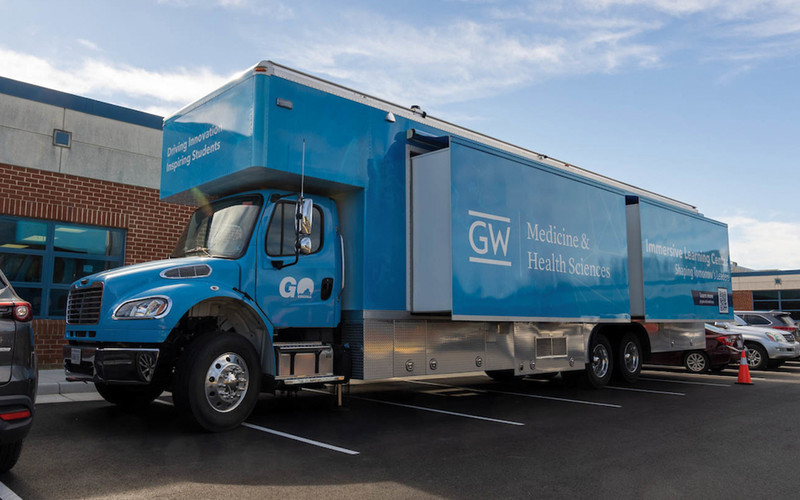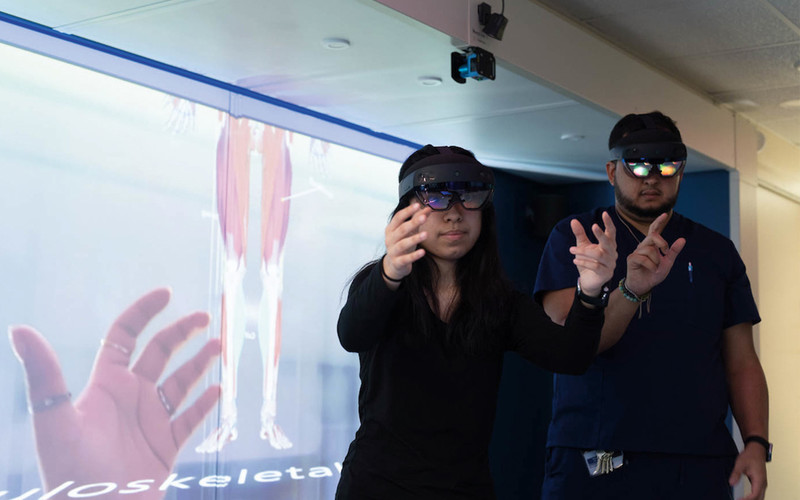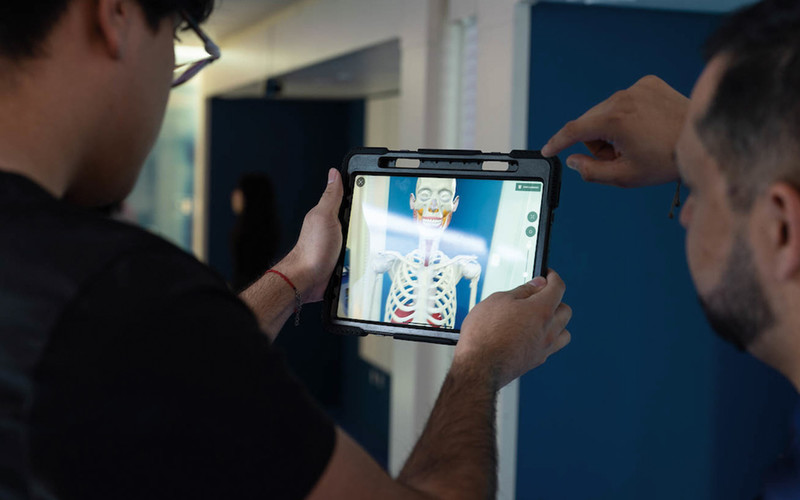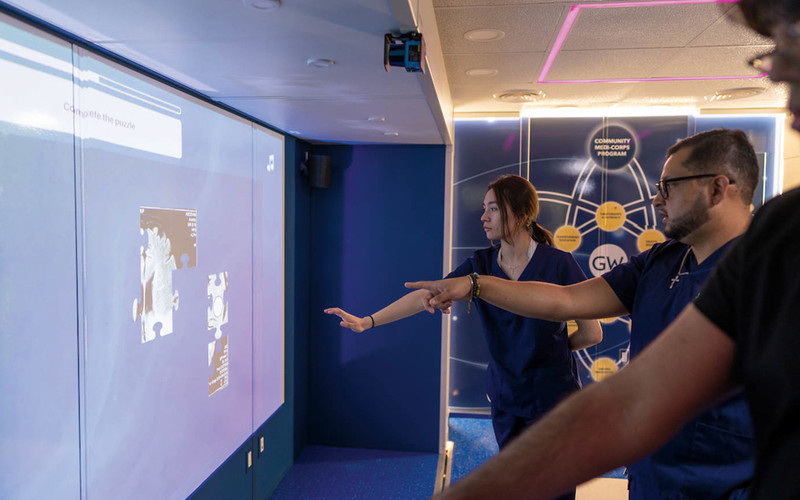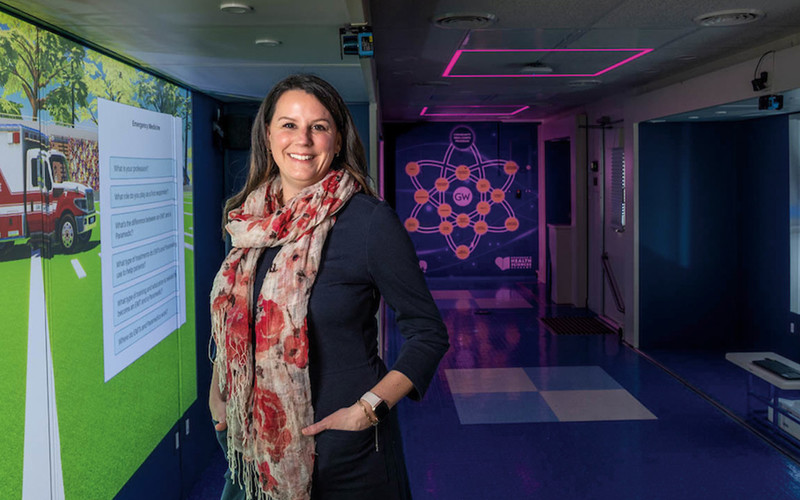The bus comes from The George Washington University School of Medicine and Health Sciences’ Community Medi-Corps Program in Washington, D.C. The nearby university designed and built the ILC with grant funding from GO Virginia.
“The purpose is to transform learning from the classroom, which is often in 2D,” says Jennifer Alpers, administrator of Fairfax County Public Schools’ West Potomac Academy. “We’re submersing students in scenarios that we can’t duplicate or re-create in the four walls of the classroom.”
West Potomac expanded its use of mixed reality in its CTE programming during the pandemic, when schools quickly pivoted to bring as many CTE classes online as they could. However, now that students are back in physical classrooms, K–12 schools continue to use these technologies in their CTE programs.
“Some people underestimate AR and VR in education,” says Rachael Mann, former board member of the Association for Career and Technical Education and current director of CTE for the Milton Hershey School in Hershey, Pa. “You can use it to take apart a million-dollar piece of equipment that a kid could never touch in real life, or to practice public safety exercises. It’s also good for collaborating across time zones and around the globe. Students can even use VR to sketch, create and design.”



